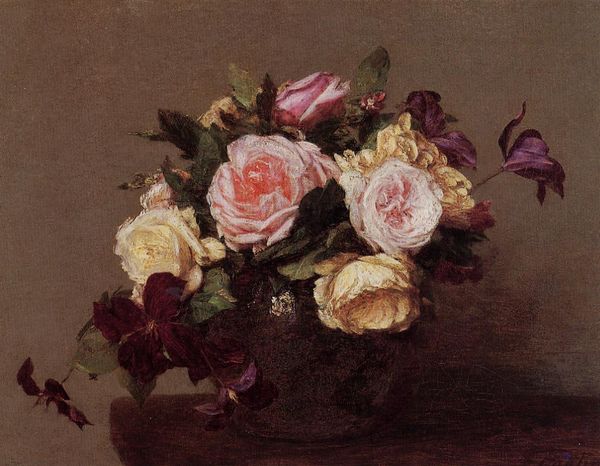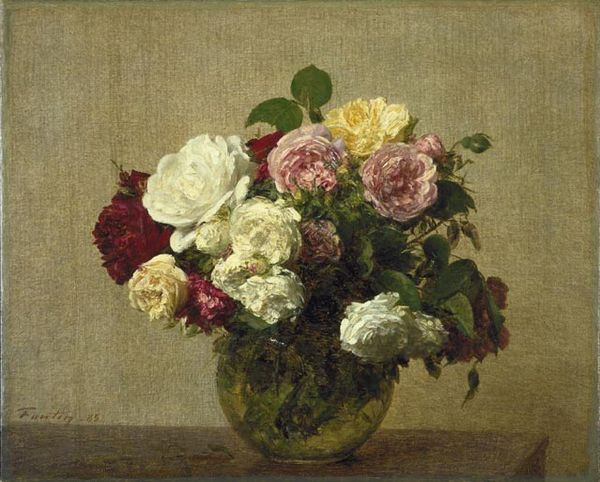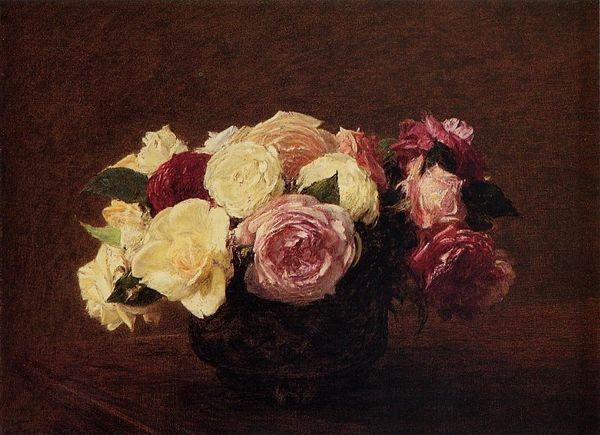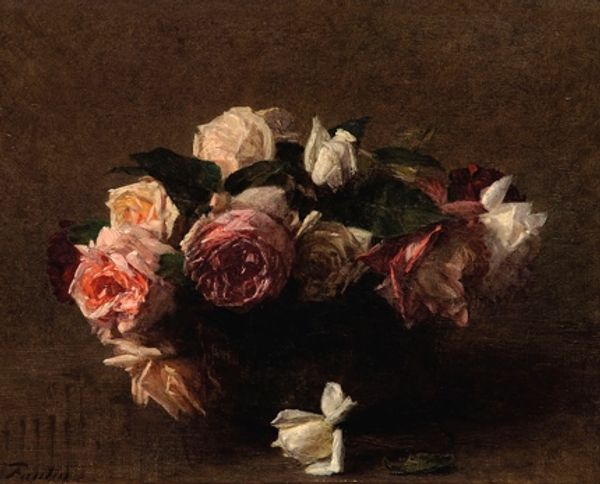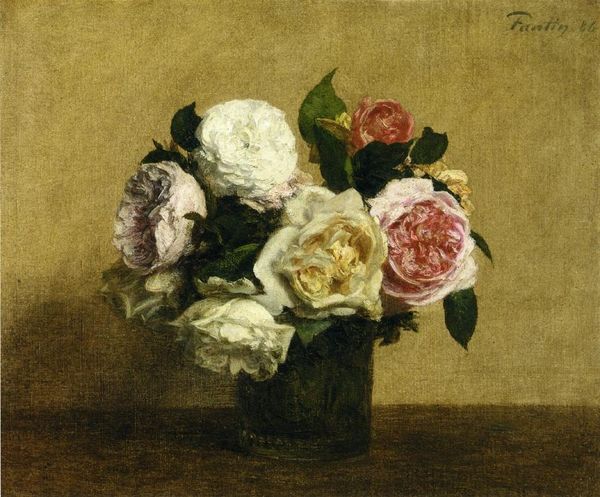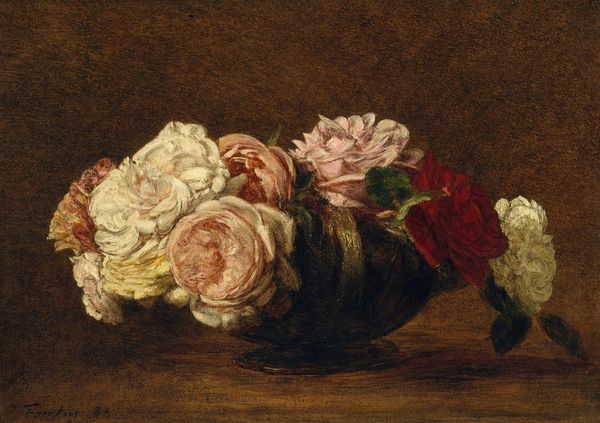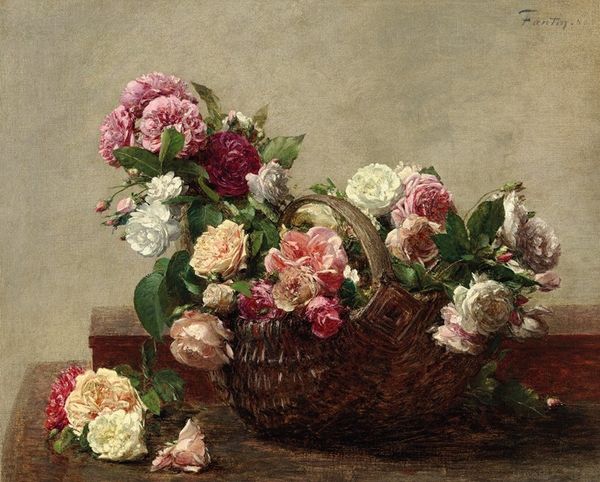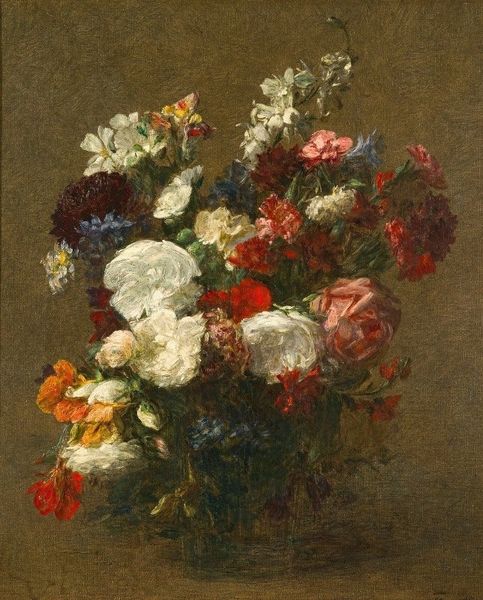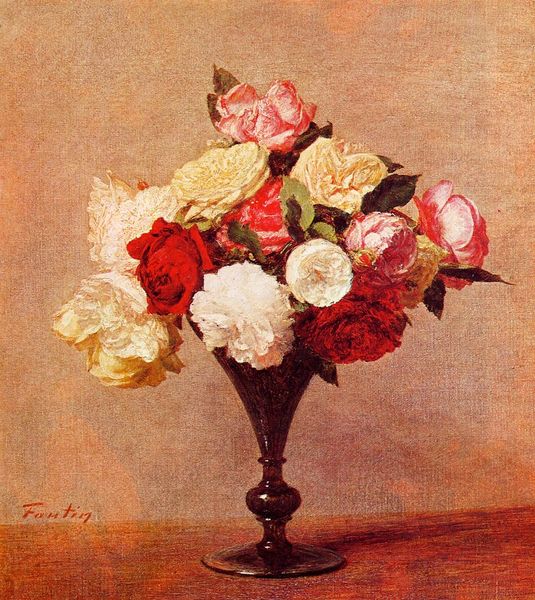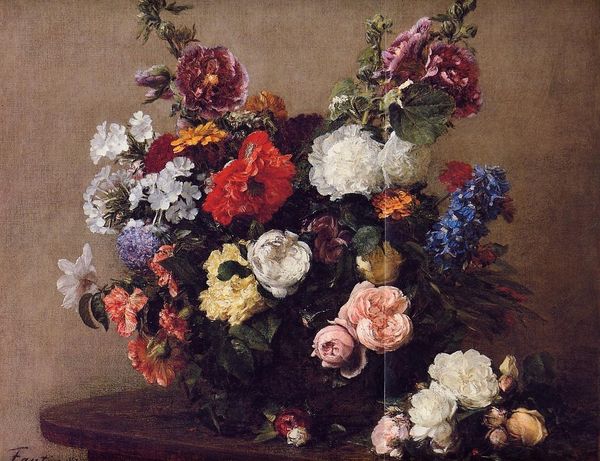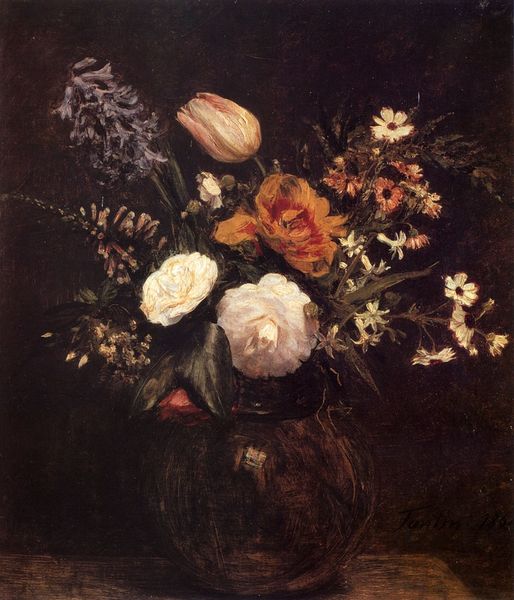
Copyright: Public domain
Editor: This is "A Large Bouquet of Roses," painted by Henri Fantin-Latour in 1886, using oil paints. It’s a lovely collection of roses, each bloom a different color, almost glowing against that brown background. How would you interpret a work like this, given the historical context? Curator: Well, the social context is key. Fantin-Latour was working during a period of rapid industrialization, and the rise of the bourgeoisie created a new market for art. Paintings like this, especially still lifes, became symbols of domesticity and refined taste, indicators of class. What do you notice about the presentation of the flowers themselves? Editor: They seem deliberately arranged, not like a wild bouquet. It feels staged in a way, perfect. Curator: Exactly. Fantin-Latour created these works, year after year, catering to a very specific consumer base who wanted beauty, order, and tradition depicted in their homes. His floral paintings allowed access to that for middle class owners. Think about it - how did institutions, like galleries and art schools, further solidify these notions of "good" art and reinforce social expectations? Editor: So it’s less about the roses themselves, and more about what they represent culturally and socially? The paintings reflect a system where certain types of art, and certain types of taste, are valued above others. Curator: Precisely. And that valuation, we have to acknowledge, is never neutral, because art has a public role, one enmeshed in power. Understanding this kind of historical context changes the way we perceive even a seemingly simple floral arrangement. What has that highlighted for you? Editor: It gives me a totally different perspective on appreciating something like "A Large Bouquet of Roses," moving away from pure aesthetics into a much richer socio-historical view. Thanks. Curator: My pleasure. Thinking about the context makes me see paintings I once saw as "just" decorative now contain worlds of societal ideas!
Comments
No comments
Be the first to comment and join the conversation on the ultimate creative platform.
